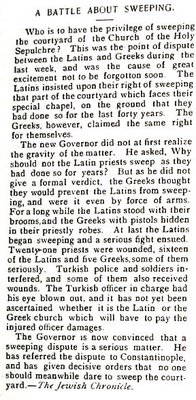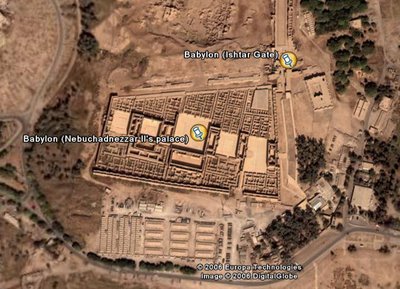The ancient “church” at Megiddo is slated to be opened to tourists next spring, reports Haaretz. Within 4 years the prison itself should be entirely relocated so that the site can become a “tourist center.” I think they might be over-estimating the site’s importance with plans such as these:
The building in which it is located, which dates back to the British Mandate, will be turned into a center for tourists interested in ancient Christianity and the nearby airfield will be expanded to allow for pilgrim flights.
Do they really think that pilgrims are going to fly in just because they found an old “church”?
Of greater interest is some new information on the “church” itself, and its date:
The oldest known Christian prayer sites date back to the middle of the fourth century, but experts who have visited the Megiddo site believe it goes back to the start of that century.
The date is based on shards and coins found at the site, as well as three Greek inscriptions on the mosaic floor of the church.
The Antiquities Authority describes the site not as a church but as a “prayer house” since it was apparently located inside a Roman officer’s private home, according to one of the inscriptions. Christianity became a legal religion in the Roman empire in the year 313.
Other findings that are indicative of early Christian rites are the central symbol of the fish, found in the mosaic, (later changed to a cross) and the fact that in one of the inscriptions, Jesus is referred to as “the lord Christos,” a term which later disappeared.
So it’s no longer a “church” but a Christian home. That sounds like sufficient reason to expand the airport.


